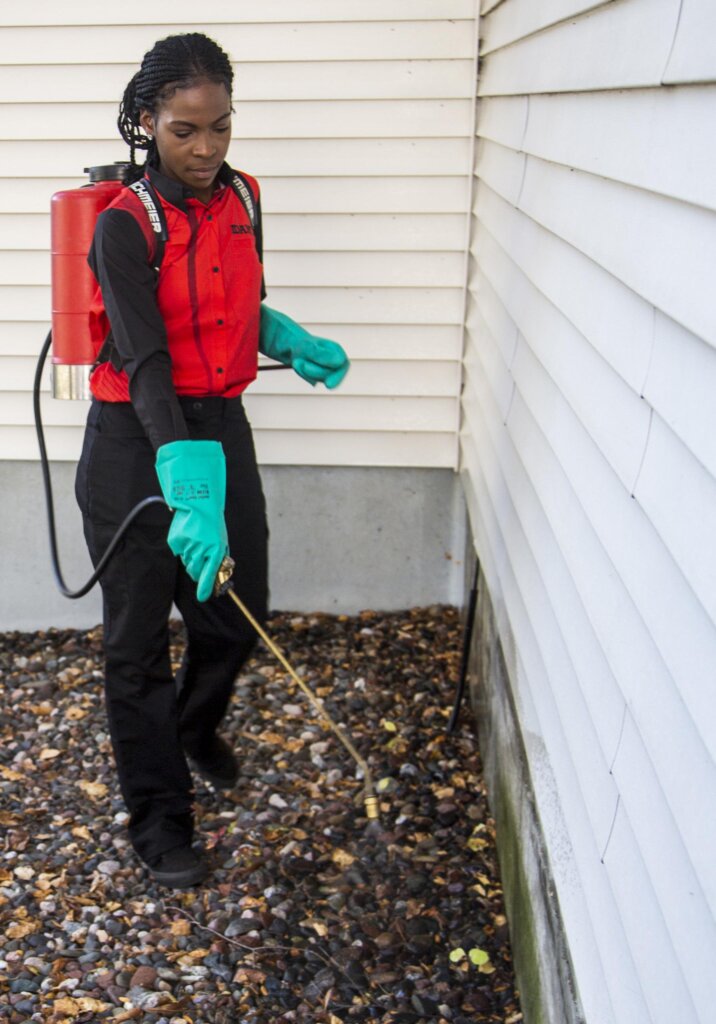A1 Pest Control Charlotte NC Bed Bugs - Specialist Extermination Services
Wiki Article
Bed Insect Therapy Breakdown: Comparing Chemical Vs. Non-Chemical Solutions
In the realm of insect control, specifically when handling the relentless concern of bed insects, the selection between chemical and non-chemical therapy remedies can be a critical one. Both strategies offer unique advantages and drawbacks, influencing variables such as performance, safety considerations, and overall price. By examining the nuanced details of each technique, a more clear understanding of which path to go after in attending to a bed pest problem can be obtained.Efficiency of Chemical Treatments
Chemical treatments for bed insect infestations have been extensively acknowledged for their rapid and potent efficiency in getting rid of these insects. When considering the performance of chemical treatments, it is essential to comprehend that they can supply a complete and quick remedy to a bed insect problem.In addition, chemical treatments have the benefit of using residual impacts, meaning that they can proceed to remove bed insects also after the preliminary application. This recurring activity is especially useful in combating any prospective re-infestations. Additionally, the quick action of chemical therapies can bring alleviation to individuals facing extreme bed insect infestations, permitting them to regain control of their living rooms swiftly.
Security Interest In Chemical Solutions
One crucial element that requires careful factor to consider when utilizing chemical options for bed bug treatment is ensuring the security of owners and the environment. Exposure to specific chemicals utilized in bed bug treatments can lead to respiratory system problems, skin irritation, or various other unfavorable reactions, especially in people with pre-existing problems or sensitivities.In addition, the environmental effect of chemical services is another considerable factor to consider. Some pesticides used in bed pest therapies might be unsafe to valuable insects, wild animals, and ecosystems if they seep into the dirt or water systems. It is vital to utilize chemical treatments deliberately, following security standards, and taking into consideration much less toxic options to alleviate these threats and ensure the safe and efficient monitoring of bed pest invasions.
Benefits of Non-Chemical Strategies
Considering the potential safety problems and environmental impact connected with chemical services for bed insect treatment, discovering non-chemical methods presents a promising choice with a number of distinct advantages. Non-chemical treatments are environmentally pleasant, as they do not contribute to air or water air pollution, making them a lasting choice for insect control.In addition, non-chemical services can be efficient in targeting bed pests, including hard-to-reach areas where chemical therapies might not penetrate - A1 pest control charlotte nc bed bugs. Methods such as warm treatment, vacuuming, vapor cleansing, and cushion coverings give thorough elimination without the usage of dangerous chemicals.
Limitations of Non-Chemical Treatments

Additionally, non-chemical therapies often need numerous applications to achieve successful eradication. This can be lengthy and might not constantly guarantee complete elimination of all bed pests and their eggs, specifically in hard-to-reach or covert areas.
In addition, the success of non-chemical treatments heavily depends on appropriate execution and thoroughness, which can be challenging for people without professional experience. Poor application of non-chemical methods may cause incomplete removal, resulting in consistent invasions and the need for extra treatments.
As a result, while non-chemical therapies have their benefits, it is necessary to acknowledge these limitations and consider them when figuring out one of the most effective approach for handling bed insect invasions.
Expense Comparison: Chemical Vs. Non-Chemical Options
Offered the limitations connected with non-chemical therapies, an important aspect to evaluate in the context of bed pest monitoring is the price comparison between chemical and non-chemical options. Chemical find here therapies commonly involve the application of insecticides by professionals, which can vary from $250 to $900 per space, depending on the seriousness of the infestation and the dimension of the area to be dealt with. On the other hand, non-chemical therapies like warm treatment or vapor can be a lot more pricey, with prices varying from $1,000 to $6,000 for an entire home. While the initial price of chemical therapies may seem reduced, multiple therapies may be needed to fully get rid of the invasion, potentially increasing the overall price. On the other hand, non-chemical options might supply a much more lasting and eco-friendly service, although they can be cost-prohibitive for some people. Eventually, when thinking about the price of bed insect treatment options, it is essential to evaluate the ahead of time costs versus the performance and long-lasting sustainability of the chosen technique.Final Thought

Thinking about the potential security worries and ecological impact associated with chemical remedies pest control sites for bed bug therapy, discovering non-chemical methods provides an encouraging alternative with a number of unique advantages.Offered the constraints connected with non-chemical therapies, an important element to review in the context of bed pest management is the expense contrast in between chemical and non-chemical alternatives. In contrast, non-chemical treatments like warm treatment or steam can be much more costly, with prices varying from $1,000 to $6,000 for an entire home. While the preliminary price of chemical therapies might appear reduced, numerous therapies might be called for to totally eradicate the infestation, possibly boosting the total price.In verdict, when contrasting chemical and non-chemical Visit Website bed insect treatment options, it is necessary to take into consideration performance, safety and security, advantages, limitations, and cost.
Report this wiki page